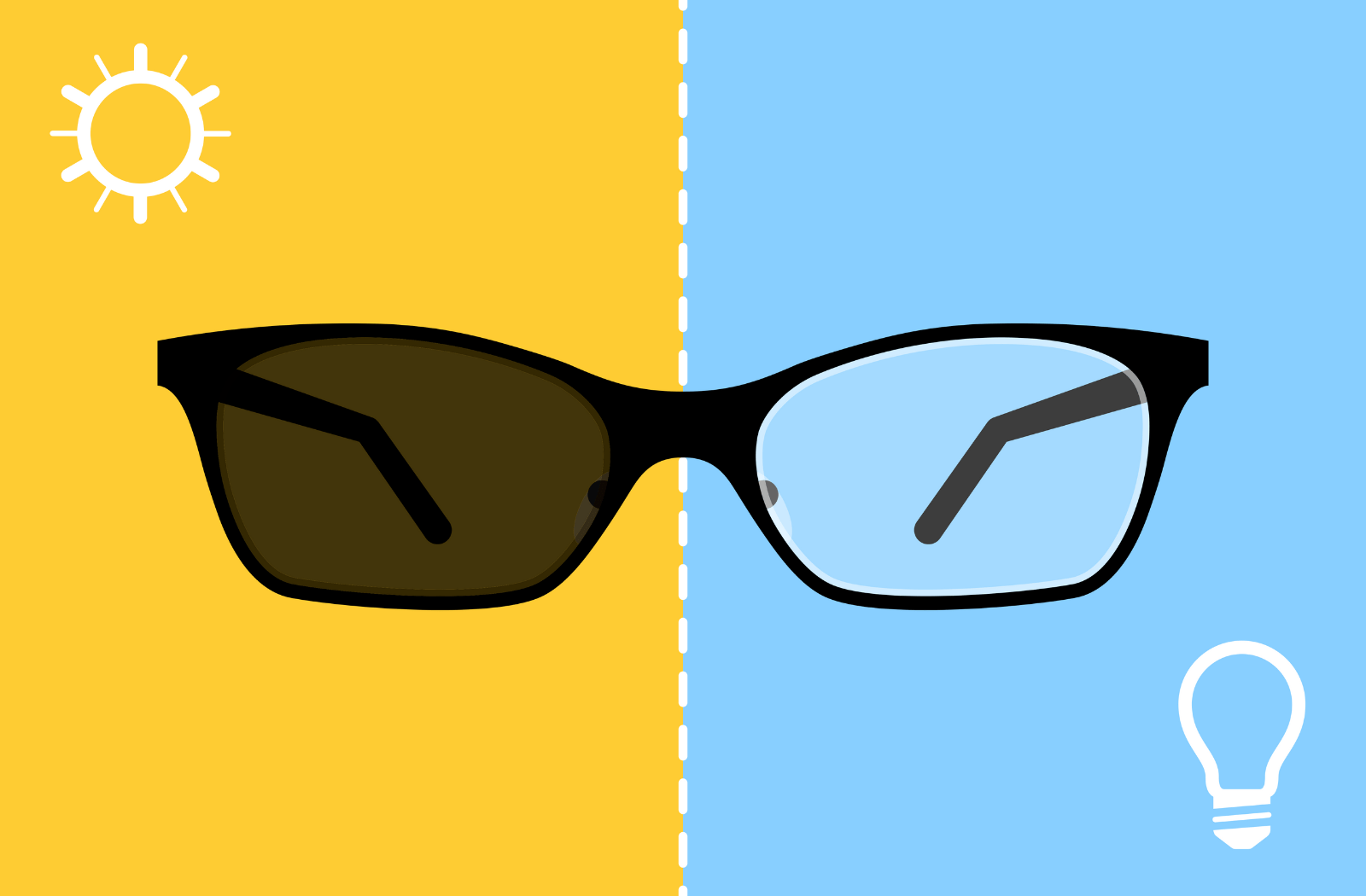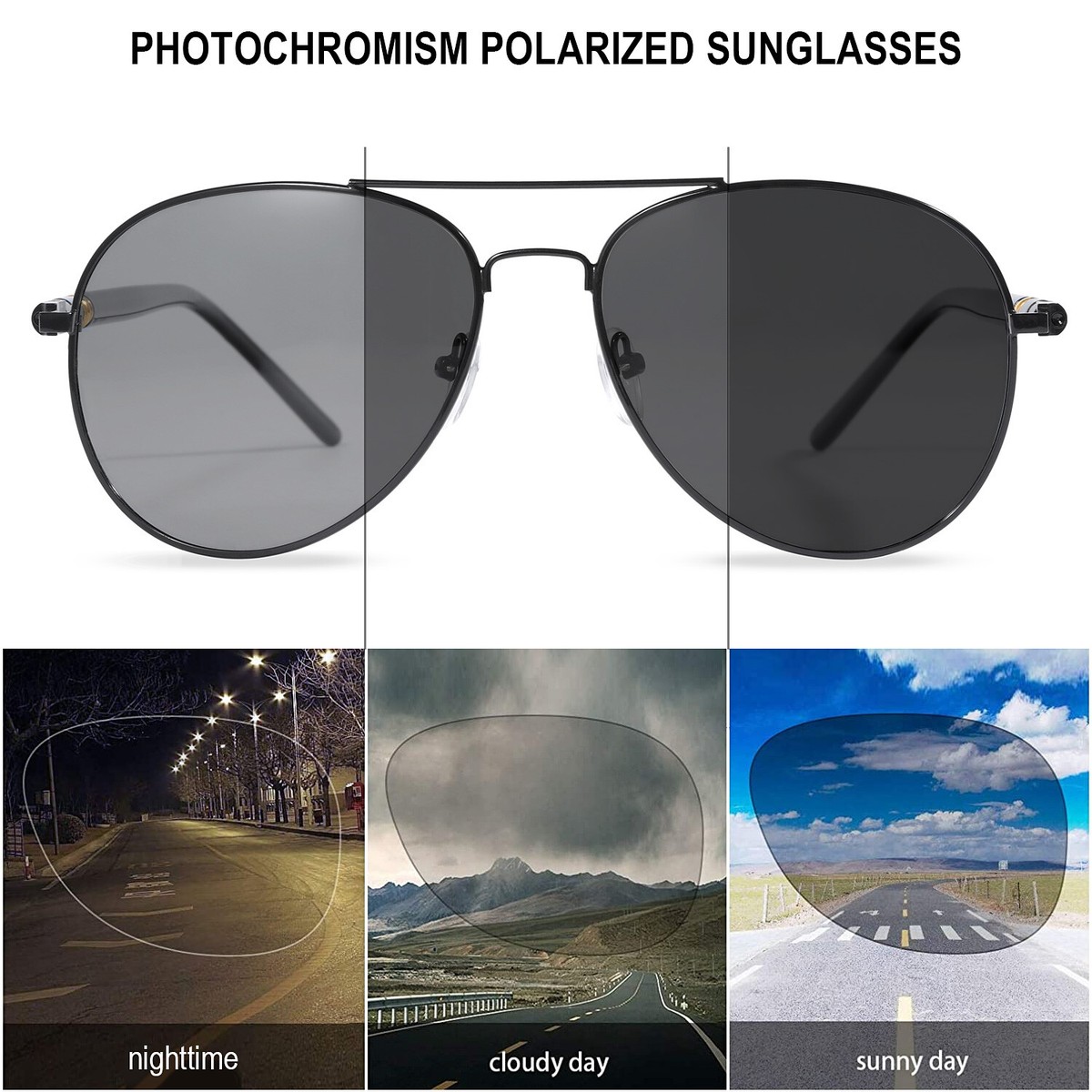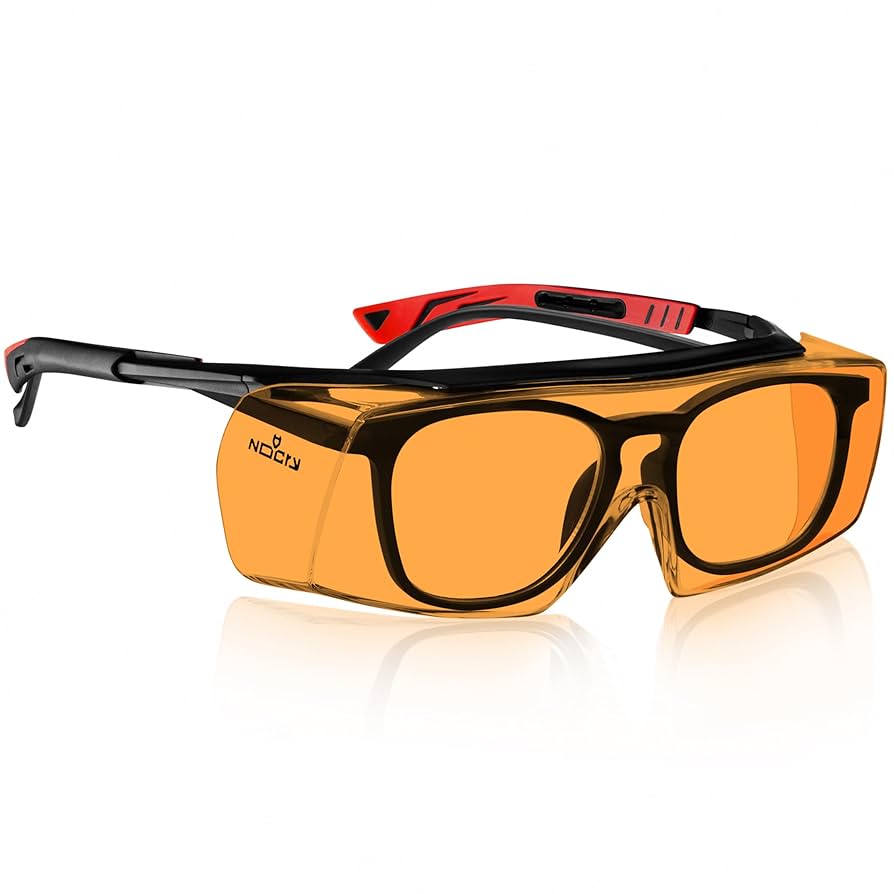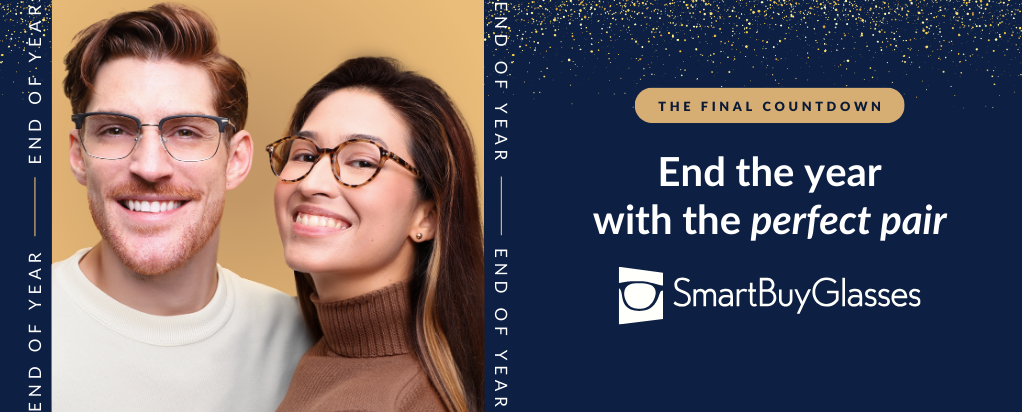Tired of choosing between clear vision and essential sun protection? Prescribed sunglasses offer the ultimate solution, seamlessly combining your specific vision correction needs with robust UV defense. Say goodbye to juggling multiple eyewear pairs. Whether you require standard correction, or specialized solutions like glasses with bifocals, these custom lenses ensure unmatched clarity and safeguard your long-term eye health in all bright conditions. Discover how this essential eyewear enhances your comfort and preserves your vision.
Understanding Prescribed Sunglasses: More Than Just Shades

For many individuals, vision correction is a daily necessity. But what happens when the sun’s blinding glare threatens both your comfort and your eye health? The solution lies in a specialized form of eyewear: prescribed sunglasses. These aren’t just fashionable accessories; they are critical tools for maintaining optimal vision and protecting your eyes from harmful ultraviolet (UV) radiation. This section delves into what these essential eyeglasses are and the profound benefits they offer in 2025.
What Exactly Are Prescription Sunglasses?
Prescription sunglasses represent the perfect fusion of corrective eyewear and robust sun protection. They are custom-made lenses designed to meet your specific vision needs – whether you’re nearsighted, farsighted, or have astigmatism – while also incorporating features that shield your eyes from the sun’s harsh rays.
Combining Vision Correction with Sun Protection
At their core, prescription sunglasses are eyeglasses with built-in sun protection tailored precisely to your unique visual requirements. Unlike over-the-counter sunglasses, which offer generic UV blocking without vision correction, or clip-ons that merely attach to existing spectacles, prescription sun lenses integrate everything into one seamless solution. This means you experience perfectly clear vision while simultaneously safeguarding your eyes from environmental elements. OPSM Optometrist Kirby Phillips strongly emphasizes the importance of this dual function, stating, “Sustained UV rays can cause irreversible damage to our eyes.” This damage can accumulate over time, making consistent and reliable UV protection paramount.
Key Benefits of Investing in Prescription Sunglasses
The advantages of opting for prescription sunglasses extend far beyond simple convenience. They play a vital role in long-term eye health and significantly enhance daily visual experiences, making them a wise investment for anyone requiring vision correction.
Enhanced Eye Health and UV Protection
One of the most critical benefits of prescription sunglasses is their unparalleled contribution to eye health and comprehensive UV protection. The sun emits ultraviolet A (UVA) and ultraviolet B (UVB) rays, both of which can be detrimental to ocular tissues. Consistent exposure to these rays without adequate protection can lead to a host of serious eye conditions over time. SunSmart, a leading authority on sun protection, reports that wearing both a broad-brim hat and sunglasses can reduce UV rays to the eyes by up to 98%.
This makes prescription sunglasses crucial for preventative eye care, helping to avert long-term impacts such as cataracts, which cloud the eye’s natural lens, and macular degeneration, a condition that affects central vision. By shielding your eyes from harmful UV radiation with high-quality corrective sunglasses, you significantly reduce the risk of these debilitating conditions, preserving your vision for years to come. Ensuring you have the right eyewear for specific conditions is as important as understanding how to order optical glasses online to achieve perfect vision and eye health.
Superior Visual Clarity and Glare Reduction
Beyond protection, prescription sunglasses offer superior visual clarity and effective glare reduction. Glare, often caused by sunlight reflecting off surfaces like water, snow, or roads, can be not only uncomfortable but also dangerous, especially while driving or engaging in outdoor activities. Protecting eyes from glare with prescription lenses ensures uncompromised vision, allowing you to see clearly and comfortably in bright conditions.
In a direct comparison, prescription sunglasses vs clip-ons highlight a significant difference in user experience. While clip-ons offer a temporary solution, they can be cumbersome, prone to scratching, and may not provide the same optical precision or full field of view as integrated prescription sun lenses. Prescription sunglasses offer integrated, seamless vision correction and sun protection, meaning you don’t have to juggle multiple pairs of glasses or compromise on visual quality. This integrated design provides consistent and crystal-clear vision, making activities like driving, sports, or simply enjoying a sunny day much safer and more enjoyable.
For those seeking the perfect blend of style, vision correction, and ultimate eye protection, exploring options for prescribed sunglasses is a crucial step. By clicking this link, you can find a wide range of custom vision-correcting eyewear designed to meet your specific needs, ensuring your eyes are well-protected while enjoying clear, uncompromised vision in any bright environment.
Navigating Lens Technologies for Your Prescribed Sunglasses

Selecting the right pair of prescribed sunglasses involves more than just choosing a frame style. The true power lies within the lenses, where innovative technologies merge vision correction with superior eye protection. Understanding the different lens options available is crucial for optimizing your visual experience and safeguarding your eye health in 2025. This section explores the advanced lens technologies and material considerations that define world-class prescription sun lenses.
The Power of Polarized and Photochromic Lenses
When investing in prescription sunglasses, two key lens technologies frequently emerge as top contenders for enhancing visual clarity and comfort: polarized and photochromic lenses. Each offers distinct advantages, catering to different environmental conditions and user needs.
Polarized Prescription Sunglasses for Glare Control
Polarized prescription sunglasses are engineered to dramatically reduce glare, which is often caused by sunlight reflecting off flat surfaces such as water, snow, or roads. This reflective glare can be incredibly distracting and even dangerous, especially during activities like driving or boating. OPSM Optometrist Kirby Phillips succinctly explains their benefit, stating, “Polarised sunglasses reduce the glare that bounces off surfaces like the road, water and oncoming traffic.” This makes polarized corrective sunglasses an invaluable tool for improving safety and comfort when driving with prescription sunglasses, particularly in bright conditions or during sunrise and sunset.
While the glare reduction from polarized sun lenses is a significant advantage for many, it’s worth noting some specific considerations. A polarized prescription sunglasses review might highlight their immense benefit for general glare, but also caution that non-polarized options could be better for niche activities. For instance, trail running or skiing often requires maintaining precise depth perception, which can sometimes be subtly altered by polarized filters. Understanding these nuances helps you make an informed choice, much like learning how to score amazing deals on prescription sunglasses by knowing your specific requirements.
Photochromic Prescription Sunglasses: Adapting to Light
Photochromic prescription sunglasses, often referred to as transition lenses or light-adaptive lenses, offer unparalleled versatility by automatically adjusting their tint based on the intensity of ultraviolet (UV) light. This means your vision-correcting eyewear seamlessly transitions from clear indoors to dark outdoors, eliminating the need to swap between multiple pairs of glasses. A prime case study demonstrating this adaptability is found in Smith ChromaPop lenses, which utilize photochromic glass that readily adapts to changing light conditions, making them a top choice for variable days and diverse environments.
Beyond traditional photochromic technology, recent innovation has pushed the boundaries further. The Ampere Dusk Rx light-responsive prescription glasses, for example, feature instant electronic tint control, capable of adjusting their darkness in just 0.1 seconds. This cutting-edge eyewear technology provides rapid and precise light management, offering an incredibly dynamic visual experience for those seeking the ultimate in adaptable prescription sun lenses.
Choosing the Right Lens Tints and Materials
Beyond specialized technologies like polarization and photochromism, the choice of lens tint and material plays a crucial role in the performance and durability of your custom-made prescription sunglasses. These selections directly impact visual comfort, contrast, and protection.
Types of Prescription Sunglass Tints for Various Conditions
The color, or tint, of your prescription sunglasses is not just an aesthetic choice; it significantly influences how you perceive light, contrast, and color. For the sunniest, brightest conditions, dark tints are highly effective. This category typically includes blue, gray, green, and brown tints, all of which excel at blocking intense glare and providing excellent overall sun protection. Gray tints offer true color perception, while brown and amber tints enhance contrast, making them popular for driving or sports.
Conversely, lighter tints such as yellow, gold, or amber are optimal for lower-light and overcast days. These tints are known for enhancing contrast and brightening the visual field, making them particularly beneficial on trail runs or during cloudy weather. They can improve depth perception and make surroundings appear sharper, proving that the right sunglass lens tint can dramatically improve visual performance across different light scenarios.
Durable and Protective Lens Materials
The material of your prescription sunglasses lenses dictates their durability, weight, and level of protection. Polycarbonate lenses, for instance, are a highly popular choice for corrective sunglasses due to their exceptional properties. This lens material offers a high level of shatter-resistance, making them ideal for active lifestyles, children’s eyewear, or safety glasses. Furthermore, they are often treated with a robust scratch-proofing coating, ensuring longevity and clear vision even with daily wear and tear.
Regardless of the tint or advanced features, one non-negotiable requirement for any prescription sunglasses is 100% UV protection. Ensuring your prescription lenses block all harmful UVA and UVB rays is paramount to safeguarding your long-term eye health. This critical feature prevents damage that can lead to serious conditions like cataracts and macular degeneration over time. To explore a wide selection of these advanced lenses and secure the best protection for your eyes, visit a reputable provider of advanced prescribed sunglasses.
For anyone seeking the ideal blend of vision correction, advanced technology, and comprehensive eye protection in 2025, exploring a wide range of prescribed sunglasses is key. Find your perfect pair and enjoy unmatched clarity and comfort under the sun by checking out the premium selection of prescribed sunglasses available.
Prescription Sunglasses for Performance & Specific Activities

Beyond everyday wear, prescribed sunglasses are essential tools for specific activities, offering enhanced vision, protection, and comfort where standard eyewear simply falls short. Whether you’re an avid athlete pushing your limits or a daily commuter navigating changing light conditions, the right pair of custom prescription sunglasses can significantly improve your experience and safety in 2025. This section delves into the specialized requirements and recommended features for performance eyewear tailored to sports and driving.
Best Prescription Sunglasses for Sports and Athletic Use
For athletes and outdoor enthusiasts, prescription sports sunglasses are more than just an accessory; they are a critical piece of equipment designed to optimize vision and protect the eyes during rigorous activities. Investing in athletic prescription eyewear ensures you maintain clear sight and focus, regardless of the challenges posed by your environment.
Features of Performance Eyewear for Athletes
When selecting prescription sunglasses for athletic pursuits, specific features are non-negotiable for reliable performance eyewear. Always look for sport-specific lenses that provide 100% UV protection, safeguarding your eyes from harmful UVA and UVB rays during extended exposure to sunlight. Essential for maintaining stability during movement, rubberized nose bridges and temple arm tips are crucial; they ensure the frames stay securely in place, even when you’re sweating profusely. Furthermore, fog-resistance technology in lenses is vital, preventing condensation build-up that can obscure vision during intense workouts or rapid temperature changes.
Consider lightweight prescription running sunglasses designed for maximum comfort and minimal distraction. For instance, models like the Tifosi Seek, weighing in at a mere 26 grams, exemplify how high-performance prescription eyewear can provide superb comfort without feeling flimsy or adding unnecessary bulk to your face. Such designs are engineered to be forgotten once worn, allowing athletes to focus entirely on their performance.
Custom Prescription Sunglasses for Optimal Fit and Performance
For athletes, custom prescription sunglasses are ideal for long outings where contact lenses might become uncomfortable, dry, or gritty. Athletic prescription eyewear offers a consistent and clear field of vision, free from the irritation often associated with prolonged contact lens wear in dusty or windy conditions.
The ability to customize your sports vision eyewear is key to achieving optimal fit and performance. Brands like Roka understand this need, offering customizable sizing options such as their SR-1X models, ensuring a snug yet comfortable fit for various face shapes. Similarly, Knockaround provides extensive custom color options, allowing you to personalize your frames to match your team colors or individual style, resulting in a truly personalized pair of prescription shades. A tailored fit is paramount not just for comfort, but also for ensuring the lenses sit at the correct optical center for your vision. Just as choosing the right frames enhances overall comfort and style, understanding your face shape can dramatically improve your eyewear experience. For more insights on finding frames that perfectly complement your features, explore our guide on selecting spectacles for oval face.
Driving Safely with Prescribed Sunglasses
Driving requires acute vision and rapid reaction times. Prescribed sunglasses for driving are not merely a convenience but a critical safety tool, ensuring clear sight and reducing glare, which are paramount for navigating roads safely.
Importance of Vision Correction for Driving
Maintaining excellent vision correction for driving is a fundamental safety requirement. For instance, Australian eyesight standards stipulate that drivers must possess 6/12 or better visual acuity and at least 110 degrees of visual field for a private driving license. These stringent benchmarks ensure that motorists can accurately perceive hazards, read road signs, and maintain situational awareness. Conditions such as poor night vision or diplopia (double vision) can severely impair driving ability, and individuals experiencing these issues may necessitate extra tests and regular reviews to obtain or maintain a conditional driver’s license. Driver's vision and road safety eyewear are therefore crucial considerations for every motorist.
Recommended Styles for Driving Comfort and Safety
When selecting prescription sunglasses for driving, recommended styles prioritize both comfort and safety. SunSmart, an authoritative source on sun protection, strongly advises choosing a close-fitting, wrap-around style of prescription sunglasses for maximum protection. This design minimizes peripheral light entry, reducing glare from the sides and providing a wider field of unobstructed vision. Protective driving glasses with a wrap-around design also offer enhanced protection from wind, dust, and debris.
Furthermore, ensure your chosen prescription sun lenses are marked as Category 2 or 3 under the Australian Standard AS/NZ1067. These certified eyewear categories are specifically approved for safe driving and guarantee that the lenses absorb over 95% of harmful UV radiation. Selecting wrap-around shades that meet these certifications provides superior visual clarity for motorists, reducing eye strain and significantly enhancing safety on the road. For a curated selection of prescription sunglasses that meet these rigorous safety and performance standards for driving, consider exploring options that offer comprehensive protection and optical clarity. Discover a range of prescribed sunglasses optimized for driving safety and comfort here: driving prescribed sunglasses.
Financial Aspects: Are Prescription Sunglasses FSA Eligible?

Navigating healthcare expenses can be complex, but understanding how to leverage your Flexible Spending Account (FSA) for vision care, particularly for items like prescribed sunglasses, can lead to significant savings. Many individuals overlook the opportunity to use these pre-tax funds for essential eyewear, including high-quality custom prescription shades that enhance daily vision and protection. This section clarifies the eligibility of prescription sunglasses under FSA and how you can maximize your benefits for various eye care needs in 2025.
Understanding Flexible Spending Accounts (FSAs)
A Flexible Spending Account (FSA) is a valuable tool provided by employers, designed to help employees pay for eligible healthcare and dependent care expenses with pre-tax dollars. This mechanism allows you to set aside a portion of your salary before taxes are deducted, effectively reducing your taxable income.
How FSA Works for Healthcare Expenses
An FSA is a special account, typically offered through an employer, that enables pre-tax payroll deductions specifically for out-of-pocket healthcare costs. This means the money you contribute to your FSA is not subject to federal income tax, Social Security, or Medicare taxes. The primary benefit of an FSA is significant tax reduction. For instance, if you contribute $2,000 into an FSA account and your combined tax rate is 30%, you could potentially realize $600 in tax savings. These pre-tax savings make essential medical expenses more affordable, turning a portion of your income into highly efficient eligible healthcare funds.
Grace Periods and Carry-Over Rules for FSA Funds
FSAs typically operate on a “use-it-or-lose-it” principle, where unspent funds at the end of the plan year are forfeited. However, employers often offer provisions to mitigate this. In 2025, there are generally two main FSA fund rules regarding unused balances:
- Option 1: Grace Period – Employers may offer a
grace periodof up to 2.5 extra months to utilize FSA money. This extends the spending deadline beyond the standard plan year end, giving you more time to use yourflexible spending dollars. - Option 2: Carry-Over Rules – Alternatively, some employers allow you to
carry overa specific amount of unspent funds to the following year. As of 2025, thisFSA carry-over limitis up to $640 per year. This flexibility helps prevent the loss of funds and encourages year-round planning foreligible expenses.
It’s crucial to understand your specific employer’s FSA rules to avoid losing valuable funds.
Maximizing Your FSA Benefits for Eyewear
Knowing what items are covered by your FSA can help you strategically plan your annual contributions and purchases. Eyewear is a common and often significant eligible expense.
Prescription Sunglasses Qualify as an Eligible Expense
Good news for your vision and wallet: prescription sunglasses are covered as an FSA eligible expense. This confirmation means you can use your pre-tax FSA funds to purchase new prescribed sunglasses, prescription sun lenses, or even a second pair of custom prescription shades for specific activities.
If you are unsure whether your FSA covers a particular item or need to confirm the eligibility requirements, it’s always wise to ask the staff in-store before making a purchase. Additionally, if your FSA administrator requires specific documentation for reimbursement, ensure you obtain a written prescription from your eye doctor for your prescription sunglasses. This simple step can streamline your FSA claims process and ensure you receive your tax-free reimbursement smoothly.
Other Eye Care Items Covered by FSA
Beyond prescribed sunglasses, FSA funds can be applied to a wide array of eye care items and services. This broad coverage ensures comprehensive vision care support. You can typically use your FSA for:
- Contact Lenses: Including daily disposables, bi-weeklies, and monthly lenses.
- Cleaning Solutions: All types of
contact lens solutionsand lubricants. - Cases: Protective cases for both eyeglasses and
contact lenses. - Eyeglasses: This includes frames,
prescription lenses, and anti-glare coatings for your everyday eyeglasses. Considering your options for affordablevision correctioncan also help extend your FSA dollars further. For those looking to get the most value from theireyewear budget, exploring guides on finding inexpensive glasses frames online can provide additional ways to save.
Utilizing your FSA for eyewear and vision-related expenses is a smart financial move, allowing you to prioritize your eye health while enjoying significant tax advantages.
Purchasing Your Prescribed Sunglasses: Options & Costs

Having clarified how your Flexible Spending Account (FSA) can make prescribed sunglasses more affordable, the next crucial step is understanding the purchasing journey itself. This section delves into the costs associated with prescription sunglasses, exploring factors that influence pricing and various payment options, including insurance. We will also weigh the benefits of acquiring your custom prescription shades online versus through traditional in-person consultations.
How Much Do Prescription Sunglasses Cost?
The cost of prescription sunglasses can vary significantly, reflecting a range of options available to consumers in 2025. Understanding what drives these price differences helps you make an informed decision that aligns with your budget and vision needs.
Factors Influencing Pricing
The price of your prescription sun lenses is influenced by several key variables:
- Brand: Premium eyewear brands often command higher prices due to design, reputation, and materials. Conversely, lesser-known brands or direct-to-consumer models can offer more competitive pricing.
- Lens Type: This is a major cost driver. Basic
prescription sun lensesare the most affordable, but features likepolarized lenses(reducing glare),photochromic lenses(adapting to light), anti-scratch coatings, UV protection (e.g., UV400), and specific tints (e.g., mirrored finishes) will increase the overall price. Complex prescriptions requiring high-index or progressive lenses also add to the cost. - Frame Material: The material of your
sunglasses framesimpacts durability, weight, and aesthetics. Options range from basic plastics to high-end titanium, acetate, or eco-friendly composites, each with its own price point. - Vision Correction Needs: The complexity of your
ophthalmic prescription, including high astigmatism or multi-focal requirements, necessitates more specialized lens crafting, which can increase the cost of yourRx sunglasses.
For those seeking an affordable Rx option that doesn’t compromise on style or durability, models like the Tifosi Swank, starting around $30, are often cited as excellent value choices for prescription sunglasses. These inexpensive prescription glasses can be a great starting point.
Insurance and Reimbursement Options
When investing in prescribed sunglasses, understanding your insurance benefits and potential reimbursement pathways is essential.
- Coverage: It’s important to note that while
Medicaregenerally does not coverprescription sunglassesas they are not deemed medically necessary for all individuals, manyprivate health insuranceplans do offervision care benefits. These plans can often partially or completely cover the cost ofprescription eyewear, includingcustom tinted lenses. - Reimbursement: Depending on your
opticianoreyewear provider, the payment process can vary. You may either pay upfront and then seekreimbursementfrom yourinsurance provideror FSA, or the provider might offer direct billing to your insurance. Always confirm the process with your insurer and theeyewear shopprior to purchase to ensure a smoothFSA claims processorinsurance claim.
Online Prescription Sunglasses Options vs. In-Store Purchases
Choosing where to purchase your prescription sunglasses involves weighing the convenience of digital platforms against the personalized service of brick-and-mortar stores. Each option offers distinct advantages for your vision correction needs.
Convenience of Online Retailers
The rise of online prescription sunglasses options has transformed the eyewear market, offering unparalleled convenience and choice.
- Process: Online retailers allow you to browse an extensive selection of
sunglasses framesand input yourprescription informationdirectly on their purchasing modules. Many offer virtual try-on tools, allowing you to see how differentRx shadesmight look on your face. This streamlinedonline orderingprocess simplifies the buying experience. - Example: Brands such as Roka exemplify this convenience. They allow you to select the
prescription optionfor your chosen frames directly on their website, with a simple follow-up process via email for submitting preciselens specificationsandpupillary distance.
For a comprehensive guide on navigating the digital landscape and finding your ideal pair, exploring resources like eyewear shop online can provide invaluable tips and insights into the best online eyewear retailers.
Benefits of In-Person Eye Doctor Prescription Sunglasses Consultation
While online shopping offers convenience, an in-person eye doctor prescription sunglasses consultation provides a level of personalized care that is often crucial for optimal vision and comfort.
- Professional Fit: An
optometristorophthalmologistwill meticulously consider factors like the position of your eyes, the precise distance between your pupils (PD), the curve of the lens, and the way theframes fityour face. These measurements significantly impactvisual clarity,eye comfort, and the effectiveness of yourprescription sun lenses. They can also make professional adjustments to ensure the perfect fit for yourcustom prescription shades. - Comprehensive Check:
Regular eye examsare paramount for maintaining goodeye health. It is recommended to have your eyes checked every two years, or yearly if you are over 65 or have conditions like diabetes. Aneye doctorcan detect earlyeye health issuessuch as glaucoma, cataracts, or macular degeneration, which are crucial for preventing seriousvision problems. This comprehensive approach ensures that yourprescription eyewear, including yourprescribed sunglasses, not only corrects your vision but also supports your overallocular health.
Ready to explore a vast selection of stylish and protective prescribed sunglasses tailored to your vision needs? Visit our collection to find your perfect pair and step into clearer, more comfortable vision under the sun. Shop prescribed sunglasses now.
Maintaining Optimal Eye Health Beyond Sunglasses

While acquiring prescribed sunglasses is a crucial step in protecting your eyes from harmful UV radiation, true vision care extends far beyond just sun protection. This section delves into the broader spectrum of eye health, emphasizing consistent preventative measures and vigilance for common ocular conditions. Understanding these aspects is key to ensuring your eyesight remains sharp and healthy for years to come.
Regular Eye Care and Preventative Measures
Beyond the immediate protection offered by your prescription sunglasses, proactively managing your ocular health through consistent eye care practices is paramount. These preventative measures are key to sustaining excellent vision throughout your life.
Importance of Routine Eye Examinations
Regular eye examinations are fundamental for preserving your vision and detecting potential issues early. These comprehensive checks are far more than just updating your ophthalmic prescription.
You should get your eyes checked at least every two years. For individuals over 65 or those managing conditions like diabetes, annual eye tests are strongly recommended. These routine eye exams serve as an essential early warning system for vision loss and various eye diseases. They are designed to catch serious ocular issues before symptoms even appear, which is especially important for eye health after age 40 when many age-related conditions begin to manifest.
Daily Habits for Sustained Vision Health
Incorporating simple daily habits into your routine can significantly contribute to sustained vision health and overall eye wellness. These practices complement the protection from your prescribed sun lenses and contribute to long-term ocular vitality.
When engaging in extended screen time, always adhere to the 20/20/20 rule to minimize digital eye strain. Every 20 minutes, look at something 20 feet away for 20 seconds. This simple habit helps relax your eye muscles and reduce eye fatigue. Furthermore, adopting a healthy lifestyle plays a crucial role. Quitting smoking is paramount, as smoking significantly increases the risk of conditions like macular degeneration and cataracts. Maintaining a diet rich in antioxidants and omega oils (found in leafy greens, fish, and nuts) provides essential nutrients for eye health. Regular exercise also supports overall blood circulation, benefiting your eyes and helping prevent conditions such as diabetic retinopathy. For those who rely on other types of eyewear for close-up tasks, ensuring you have the correct and most comfortable pair is also vital for daily vision comfort and eye health. Finding the best reading glasses for men, for instance, can significantly improve daily visual clarity for tasks like reading or working on a computer.
Common Eye Conditions and Their Impact on Vision
Understanding common eye conditions and their potential impact on vision is crucial for proactive eye care. While prescription sunglasses protect against UV-related damage, various other factors can affect your eyesight.
Age-Related Vision Changes
As we age, vision naturally tends to undergo several changes. The eye’s lens gradually becomes less elastic, leading to common age-related vision issues. By 2025, data indicates that the number of people affected by vision loss triples with each decade over 40, highlighting the growing prevalence of these ocular changes.
Common age-related eye conditions include refractive errors like myopia (nearsightedness), hyperopia (farsightedness), and presbyopia (difficulty with close-up vision, often requiring reading glasses). More serious conditions include Age-related Macular Degeneration (AMD), which affects central vision; Glaucoma, a condition damaging the optic nerve; Cataracts, clouding the eye’s lens; and Diabetic Retinopathy, a complication of diabetes affecting the retina. Early detection of these ophthalmic conditions is key to managing their progression and preserving visual function.
Warning Signs to Look Out For
Being vigilant about warning signs of vision problems can make a significant difference in outcomes. Early detection and intervention are paramount for effective eye care.
Be acutely aware of any sudden or gradual changes in vision such as reduced visual acuity (blurry vision), reduced peripheral vision (loss of side vision), reduced depth perception (difficulty judging distances), difficulty with color differentiation, or reduced night vision. If you notice any of these symptoms, or experience eye pain, flashes of light, or floaters, it is imperative to schedule an immediate appointment with an eye doctor or ophthalmologist for a comprehensive eye test. Prompt consultation can lead to timely diagnosis and treatment, safeguarding your ocular health and visual future.
Embrace Uncompromised Clarity and Protection with Prescribed Sunglasses
Ultimately, prescribed sunglasses are more than just a fashionable accessory; they are a critical investment in your long-term eye health and daily comfort. We’ve explored their profound benefits, from providing superior UV protection and preventing serious eye conditions like cataracts and macular degeneration, to offering enhanced visual clarity and glare reduction through advanced technologies like polarized and photochromic lenses. These custom solutions ensure uncompromised vision, whether you’re driving, engaging in sports, or simply enjoying the outdoors.
Understanding the various lens tints, materials, and crucial 100% UV protection ensures you select the optimal pair for your specific needs and activities. Furthermore, leveraging financial tools like Flexible Spending Accounts (FSAs) can make investing in high-quality prescribed sunglasses a smart, tax-efficient decision. Whether you opt for the convenience of online retailers or the personalized expertise of an in-person eye doctor consultation, selecting the right eyewear is paramount. Remember that these specialized sunglasses complement a holistic approach to eye care, which includes routine examinations and healthy daily habits to ensure sustained vision health throughout your life. Make an informed choice to protect your vision effectively in 2025 and beyond.

Leave a Reply